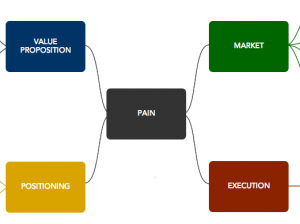
[Editor’s Note: This is a guest post from Thomas Rankin. It is subset of his original post, which is a collection of thoughts and research compiled during some of the earliest exploration into the Dash Hudson business model. ]
The Set-up
E-commerce is on a rocketship, with clothing retailers and brands using technology to create new ways to engage with customers online. In fact, clothing and accessories is the fastest growing segment of e-commerce. A study done by Emarketer projects that online sales of clothing and accessories will continue to grow year over year at a rate faster than even the electronics and books segment, with sales reaching $73 billion by 2016.
Don’t Forget the Dudes
Despite the trope of women as fashion-obsessed shopaholics, men also have a desire to buy things they know they’ll look good in. However, most department stores and shopping malls are designed with the female shopper in mind, leaving men to fewer clothing options, particularly for those who are sartorially-inclined. This void, combined with growing presence of internet and mobile technology in fashion e-commerce, creates a perfect storm of opportunity for online brands and retailers that offer affordable, convenient, and fashionable options for men. According to research from Rakuten Linkshare, 83% of men surveyed prefer to shop online. Not only are men flocking to online retailers to get their new threads, but according to Chris Ventry, the general manager of Gilt Groupe’s GiltMan, men are out-shopping women by 20-30% in all areas of online shopping.
Where the Boys Are: Men’s E-Commerce Companies
A number of men’s e-commerce companies are cashing in on men’s interest in buying fashionable and trendy clothes online. Companies such as Frank & Oak, Bombfell and Trunk Club are at the forefront of offering a curated subscription service that makes shopping efficient for guys. Subscription commerce has proven popular with men who wish to avoid the complex decision making involved with shopping. Other online-exclusive fashion companies like Bonobos, Jack Threads, and Mr. Porter offer quality men’s fashion at various prices. Bonobos is for the guy who likes the crusts cut off his peanut butter sandwich, Jack Threads for the guy who likes crusty dive bars and Mr. Porter for the socialite upper crust. J.Crew is a well-known traditional unisex offline retailer that offers an expansive online selection for men. H&M, Uniqlo and Zara compete for the disposable fashion market at a lower pricepoint. Streetwear companies like Superdry, Saturdays Surf NYC, Need Supply Co., Union Made Goods, and Stussy offer casual and weekend wear for dudes that take their looks seriously. For the slightly avant garde, it’s all about the Nordic brands: Matinique, Norse Projects and Selected Homme are doing some of the best work in men’s fashion today.
Just Show me the Good Stuff
Clearly the world has changed, as there are a growing number of fashion options for men. So many that it is easy for guys to get overwhelmed, like a child lost at Nordstrom. According to research from Rakuten LinkShare, 48% of young male shoppers between the ages of 18-25 are overwhelmed by the plethora of choices with online shopping. Refinement of those options is a serious challenge. A survey conducted by Dash Hudson indicated that more than 60% of guys aged 18-24 want social validation and recommendations before buying. This contrasts with women, where over 75% want to discover content on their own. Guys readily admit that they need help looking good, and want guidance on what to buy. For the sartorially interested male, the growth in popularity of social commerce sites has been a mixed blessing. Pinterest launched in 2010, giving consumers the ability to take part in a taste-based community that curates photos of fashion, food, architecture, hairstyles and many other things. Now social shopping companies like Wanelo, Fancy, Svpply, and Fab are making it easier for fashion-conscious shoppers to curate their style, draw inspiration from other users, and connect to their favourite stores and brands. A review of Alexa data shows that each of these shopping sites is much more likely to be frequented by female shoppers, something that is evidenced in their communities and user experiences.
Mind the Gaps in the Market
Despite the growth of men’s fashion e-commerce, there remains a great deal of room for innovation. Although social shopping companies like Wanelo and Pinterest allow users to curate their style, the plethora of available products can be overwhelming for the male shopper. Our research at Dash Hudson indicates that over 80% of men come to a shopping platform with the intent to buy as opposed to create content. The prevalence of dead and broken links in social shopping sites often interrupts the demonstrated intent. I am Jack’s complete frustration.
So close.
New social marketplaces must solve the problem of enabling the customer to search great content and then convert intent into purchase. This is especially important in the case of the need and immediacy-driven male shopper.
The Future of E-Commerce Is In Your Hands – Literally
The trend of men shopping online will continue to grow with mobile shopping becoming the newest way to efficiently discover and purchase clothing. Mobile technology can capitalize on men’s desire to shop on the go, making the fashion e-commerce experience more efficient than ever. According to Forrester, mobile currently accounts for 5 percent to 10 percent of all retail transactions. Yet for most online retailers, the big story is that mobile commerce is increasing at a rate of up to 185 percent. For men’s retailers who have caught the mobile wave (ahem, Jack Threads) this is great news. The DDB Lifestyle Survey in 2013 indicated, of men aged 18-34, 30% use shopping apps on their phone and 24% typically shop for and buy items on their smartphones. In the age of the digital urban lifestyle, convenience wins.
Final Thoughts
Experiences need to become tailored to how men shop by getting the best, most validated clothing in front of the shopper for their final purchasing decision. As more social shopping experiences become tailored for men, and as better retail products are built for mobile devices, male shoppers will start to feel the warmth of a market that finally understands them. At the end of the day, it’s all about being the coolest version of yourself. Finally, guys are being given the tools that make it fun and easy for this to happen.





